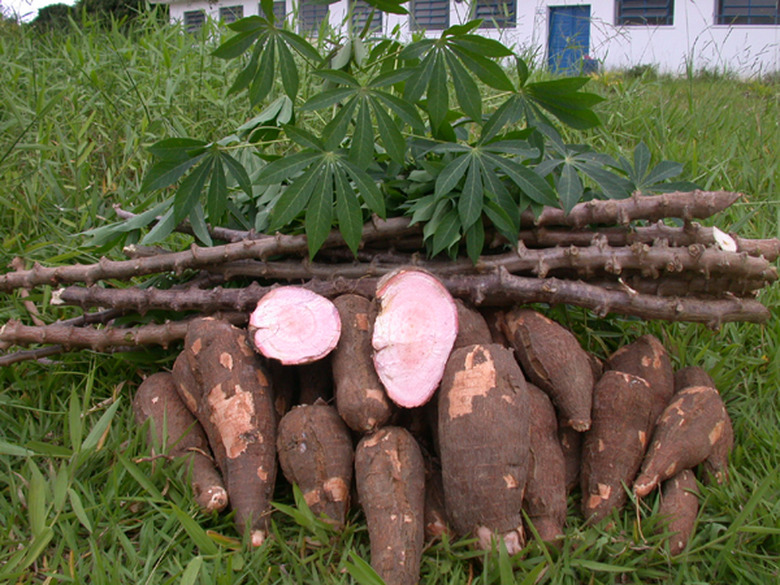How To Grow Cassava
Things Needed
- Knife
- Shovel
- Compost
- Water
- Cassava stem (1-inch thick)
The cassava plant, (manihot esculenta crantz) is a food crop grown extensively in Thailand, Africa and Brazil. It has a starchy root that is high in potassium and calcium, serving many countries as their major food source.It grows in just about any setting as long as it can get ten months of growing time and plenty of heat..
Step 1
Choose a healthy cassava stem from a plant that has already borne tubers. Keep it in a cool dry place and wait about 10 days after you cut it to plant it. Look it over to make sure there are no insects or diseased portions.
Step 2
Work the compost into the soil. Cassava likes to grow in rich, moist soil that has been loosened up. It will grow under very poor conditions, but the roots will not be as large or plump, and it will not grow as fast.
- The cassava plant, (manihot esculenta crantz) is a food crop grown extensively in Thailand, Africa and Brazil.
- It grows in just about any setting as long as it can get ten months of growing time and plenty of heat..
- Choose a healthy cassava stem from a plant that has already borne tubers.
Step 3
Form raised ridges in rows in the cultivated bed you have prepared. They need to be about six to 10 inches high and about a yard apart.
Step 4
Cut off a six-inch section of the stem when the soil is moist and stick it into the soil, the same direction it grew. The section should have a few growing buds on it. Bury half of the cut piece and press down the soil around it.
Step 5
Plant the rest of your stems about one yard apart in the raised ridges. At this distribution, the foliage will cover most of the soil, preventing the need for weeding.
- Form raised ridges in rows in the cultivated bed you have prepared.
- Cut off a six-inch section of the stem when the soil is moist and stick it into the soil, the same direction it grew.
Step 6
Weed the beds for the first six weeks and mound the soil up around the plant to strengthen it against the winds. Water as necessary.
Step 7
Harvest the cassava tubers after about ten months of growing time. Cut off the larger tubers from the stem and allow the rest to continue to grow. They can stay in the ground for about 18 months. Once cut, they are perishable so either cook immediately or coat with a layer of paraffin.
